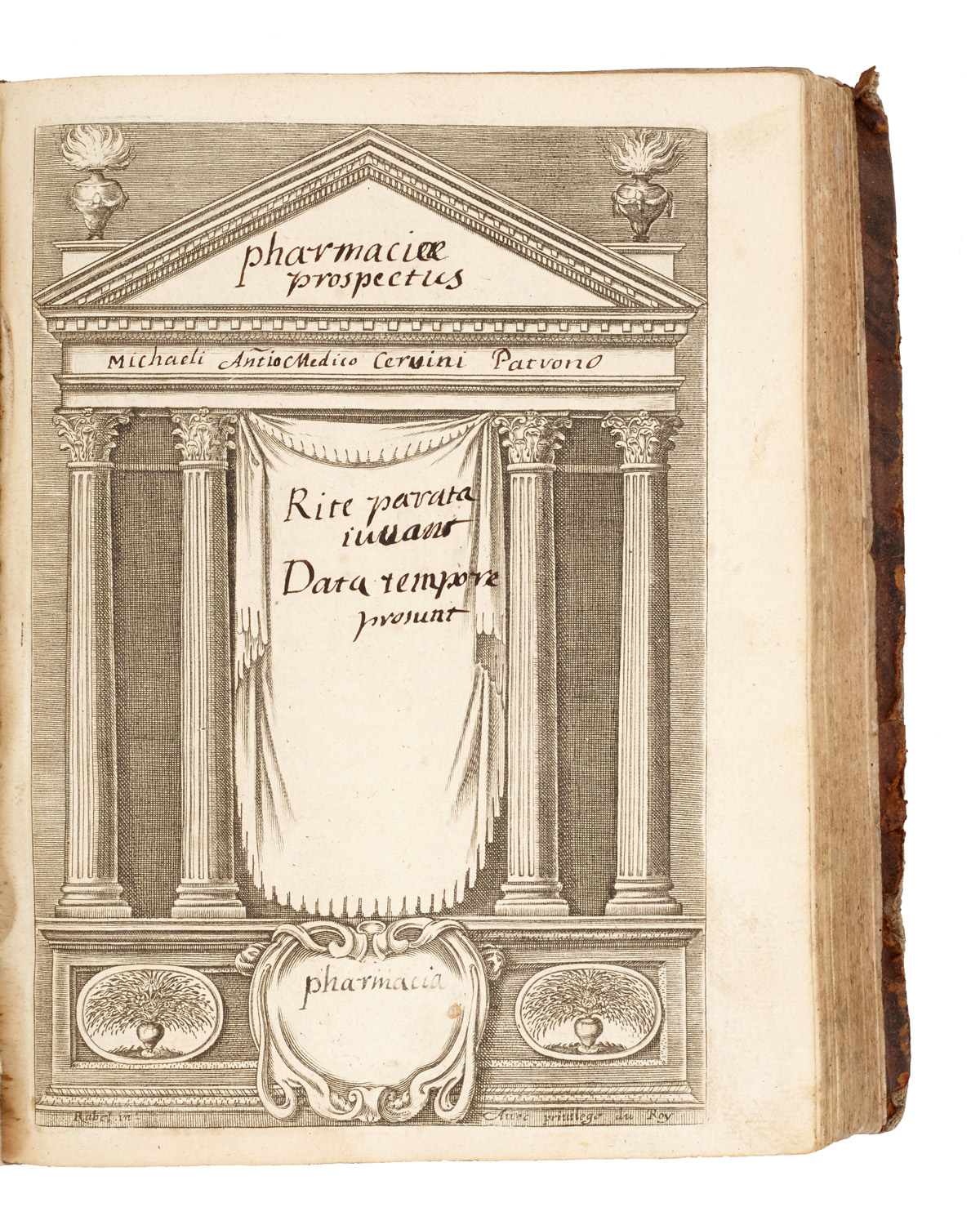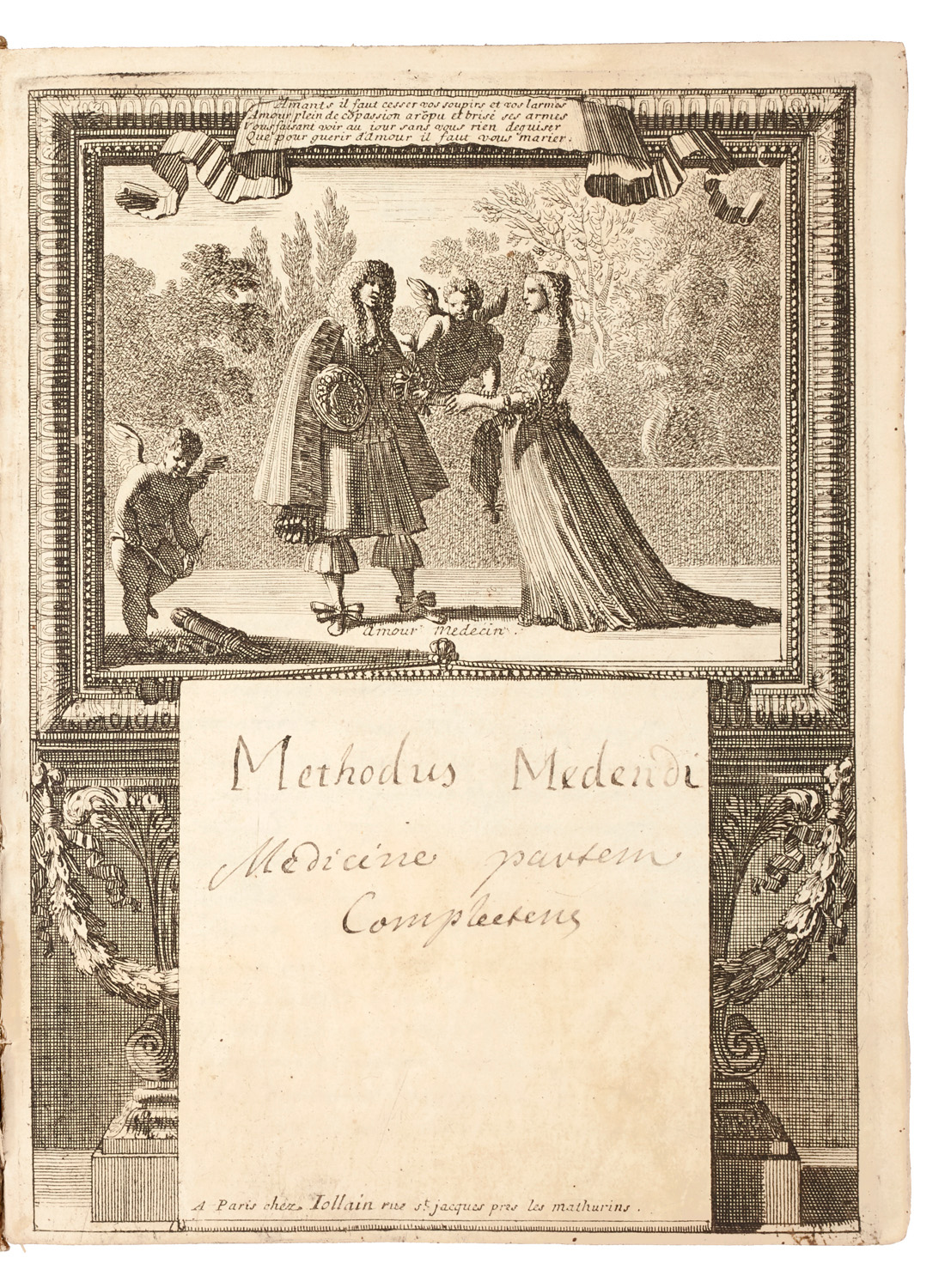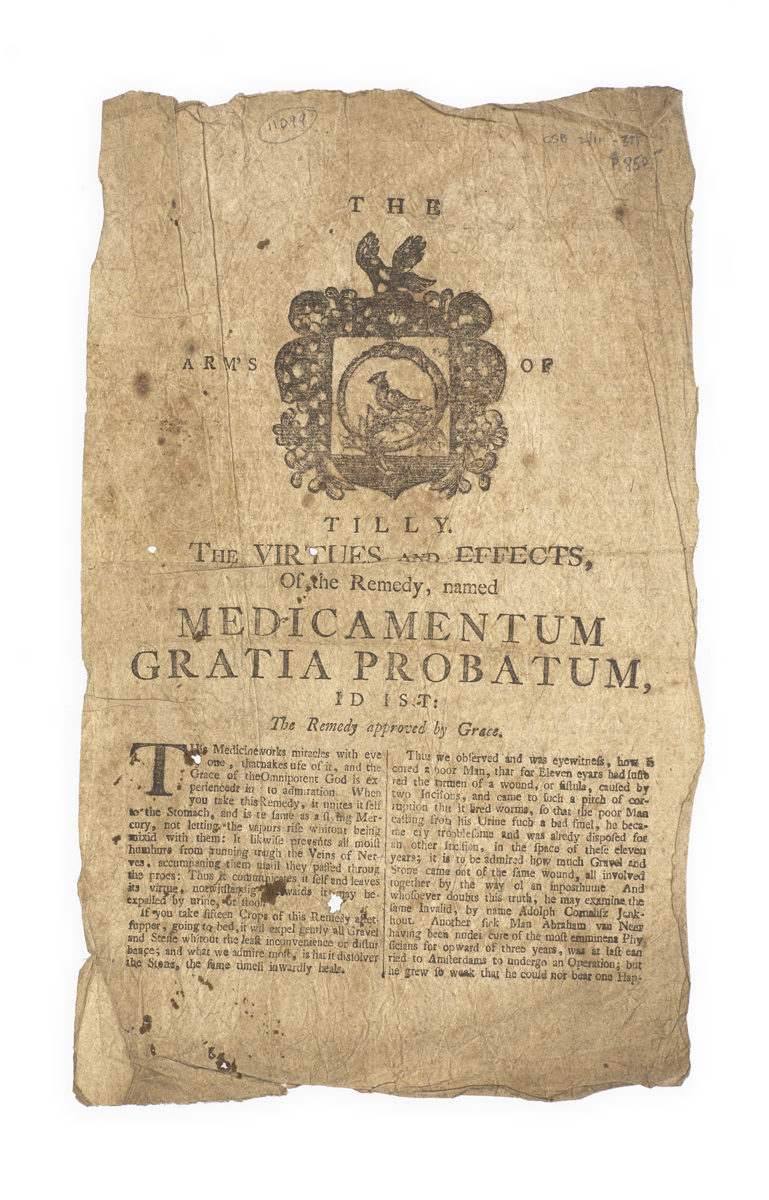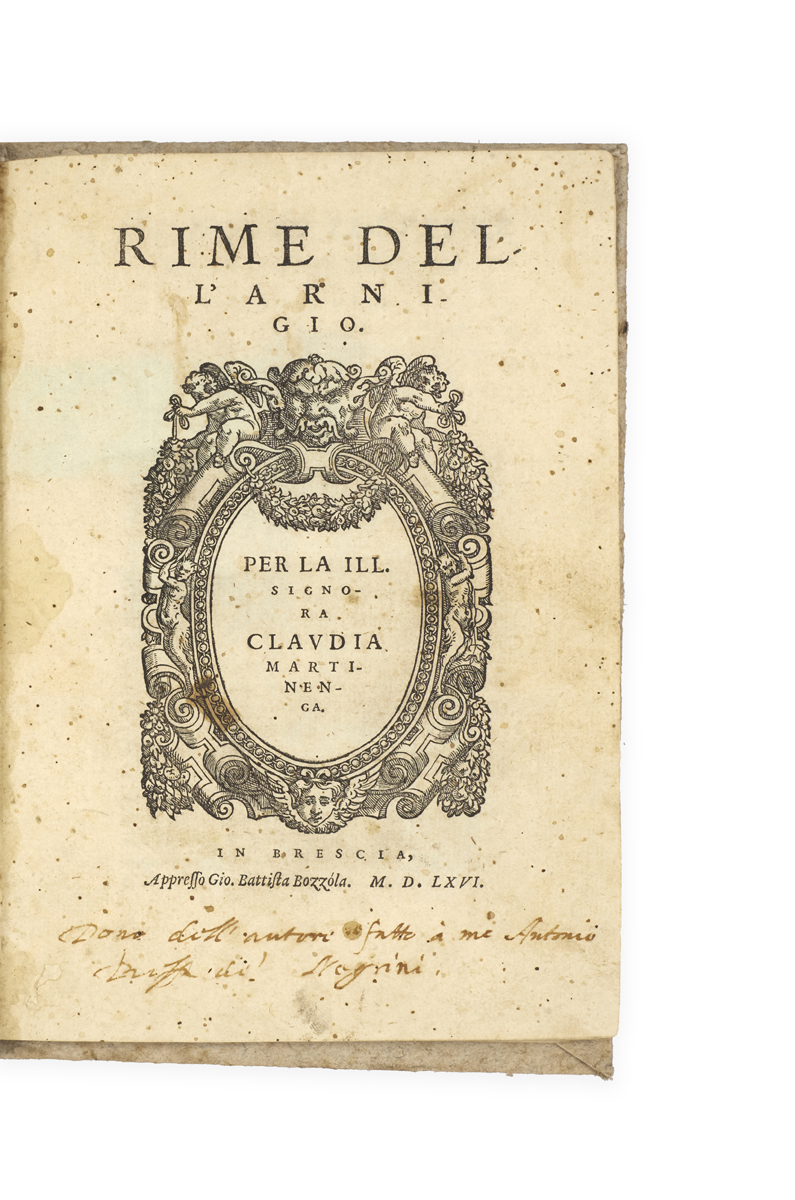



PHARMACOLOGY AND SURGERY
[CERVINI, Michael Antonio.]
‘Methodus medendi medicine partem complectens’, ‘Appendix de preiudiciis evitandis in methodo’; ‘Pharmaciae prospectus Michael Ant[on]io Medico Cervini Patrono’; ‘Chirurgia Michaeli Antoni Medico Cervini Castagnoliaru[m]’.
Turin, July-August 1714.
Manuscript on paper, in Latin, 4to (225 x 175 mm), 3 parts in 1 vol., pp. [2], 1-179, (jump in pagination) 190-257, 258-268 (blank), 269-272 (‘Appendix’), 273-280 (blank); [2], 1-195, [13]; [2], 1-68; engraved frontispiece to each part with title added in manuscript, a few small illustrations to the final part; neatly written in brown ink in a single hand, c. 30 lines per page, a few marginalia in the same hand; very occasional light damp staining to margins, a few light marks; very well preserved in contemporary calf, spine gilt in compartments with lettering-piece; small areas of loss to head and foot of spine and corners, a little worn.

Added to your basket:
‘Methodus medendi medicine partem complectens’, ‘Appendix de preiudiciis evitandis in methodo’; ‘Pharmaciae prospectus Michael Ant[on]io Medico Cervini Patrono’; ‘Chirurgia Michaeli Antoni Medico Cervini Castagnoliaru[m]’.
A substantial and highly interesting manuscript compendium, apparently unpublished, compiled by a medical student in Turin, in northern Italy, by the name of Michael Antonio Cervini, including numerous medical receipts and a treatise on surgery.
The text opens with an introductory ‘Methodus medendi’ (after Galen’s work of the same name) beginning with discussion of thirteen ‘theorema’, such as ‘incogniti morbi nulla curatio’. Subsequent chapters cover, inter alia, diet, phlebotomy, blood, ‘chachochimia’ (unhealthy humours in the body), and diseases and their indicators. The second part, devoted to pharmacology, comprises an extensive collection of prescriptions for all manner of purgatives, diaphoretics, diuretics, emetics, lithontriptics (for dissolving bladder or kidney stones), astringents, antidotes, antispasmodics, stomachics, narcotics, opiates, and vulneraries, as well as receipts for treating worms, fevers, coughs, and problems relating to menstruation and childbirth, and for boosting fertility. It ends with an appendix on drinking milk and thermal spring water. The final part is devoted entirely to surgery, including discussion of surgical instruments, dieresis, lithotomy, apheresis, and hernias, and features a few small sketches of surgical instruments. Medical authorities referenced throughout the text include Vesalius and Falloppio.
The progress of the manuscript’s composition is noted in two places: ‘Dat Taurini die octava Julii 1714’ (p. 244), and ‘10 August anno 1714’ (p. 272). While the manuscript was evidently compiled at the medical school in Turin, the engraved frontispieces to each part were produced in France (the first ‘A Paris chez Iollain’, for example).

